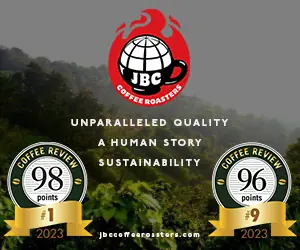Evaluating coffees presents somewhat different challenges from evaluating wines, beers or cigars. The reason: Coffee is a continually changing collaboration rather than a fait accompli in a bottle or box. Good wines get put in bottles in the winery, usually by the same people who grow the grapes and produce the wine. Although wine changes while inside the bottle, that change is reasonably predictable. On the consuming end, all that needs to be done to enjoy a wine is to properly store the bottle, open it, pour the wine (in some cases after a proper interval), taste it, then carry on about what you’re tasting.
Coffee, on the other hand, is subject to a globe-spanning sequence of operations by a succession of people stretching from grower to consumer-brewer, people who live in different parts of the world and who often don’t even know one another’s name, much less work at the same winery.
The process is kicked off by someone who grows and harvests the coffee fruit, either meticulously (all ripe fruit) or sloppily (green and overripe mixed in). Either the grower or a second party then “processes” the coffee using one of several methods. With the dry or “natural” method the seeds or beans are dried whole, with both skin and pulp of the fruit adhering to the seeds or beans. In the classic wet or “washed” method the skin and fruit pulp is removed from the seeds before they are dried.
In the honey or pulped natural method, the skins are removed but the sticky fruit pulp, or honey, is allowed to remain entirely or partially on the seeds/beans. Each of these three methods can be performed with many variations and nuances. Processing is one of the most demanding and decisively creative acts in the crafting of both quality and distinctiveness of fine coffee.
The producer or processor usually sells the dried beans to a third party, the exporter. Exporters may blend beans from different processing mills before bagging and shipping them. They even may do exotic things to the beans, like aging or monsooning them.
A fourth party, the importer (who may also serve as exporter), brings the coffee into the consuming country, though in most cases importers spare the coffee any further manipulation, confining themselves to passing judgment on it and selling it to roasters.
At this point the coffee is subjected to perhaps the single most influential act of all, aside from processing: roasting. The roaster may roast coffees from single origins, farms or farm lots (“single-origin”) or may blend beans from a variety of crops and regions. The retailer (by my count we’re now on our fifth active collaborator) performs a simple but very significant service: handling the coffee sensibly and selling it before it gets stale.
Finally, the consumer (the sixth actor in the coffee drama) buys the coffee, grinds it (usually), and finally produces an actual beverage. But we’re not even finished here, because the friend the consumer/coffee brewer just invited in to share this meticulously grown, harvested, processed, roasted and brewed coffee may be moved to dump an ounce or two of white liquid into it, not to mention a spoonful of one of seven or eight different possible sweeteners, all with differing effects on the final beverage.
Thus, by the time it is drunk, a coffee has been subject to at least seven momentous processes carried out by seven potentially unrelated parties resident in anywhere from two to four parts of the world. Coffee is not bottled or boxed. It’s not just bought, opened and drunk. It’s a multicultural, transoceanic, culinary work-in-progress. Which is why I love writing about coffee, a beverage that lives and changes and lets everyone from grower to consumer to step up and take a creative whack at it.
Beware of buying coffee simply by name rather than taste. Coffees from certain regions, farms or cooperatives that have a track record of success over the years (often signaled by consistently high ratings at Coffee Review) are good bets, but never sure bets. Because a coffee lot from one field will be different from a lot from another field even though the name of the farm is the same, and next year’s crop will be different from this year’s crop. Furthermore, this year’s crop is the only one you will have a crack at. Green coffee, even stored properly, does not age particularly well, so there is no real coffee equivalent of cellared vintage wines that can be recommended and purchased by winery, name and year. Buying a specific great or high-rated coffee is an adventure in immediacy: buy now or lose the chance later.
Even buying the same high-quality blend from the same distinguished roasting company is not a sure thing. Famous-Name-Coffee Company’s premium espresso blend may be different from year to year or even from month to month, despite bearing the same name and label. The particularly skillful coffee buyer and roaster who helped create the blend you and I liked so much may have gotten hired elsewhere. Bad weather may have spoiled the crop of a key coffee in the blend.
The exporter or importer of that key coffee may have gotten careless. And even if everyone (plus the weather) did exactly the same thing they (and it) did the year before, the retailer this time around may have spoiled everything by letting the coffee go stale before you got to it. Or you may have messed things up this year by keeping the coffee around too long, brewing it carelessly, or allowing a friend to pour hazelnut syrup into it.
Our reviews and the names in them are a good starting point, but ultimately they are only that: a beginning point for learning about coffee and learning about your own taste in coffee.










